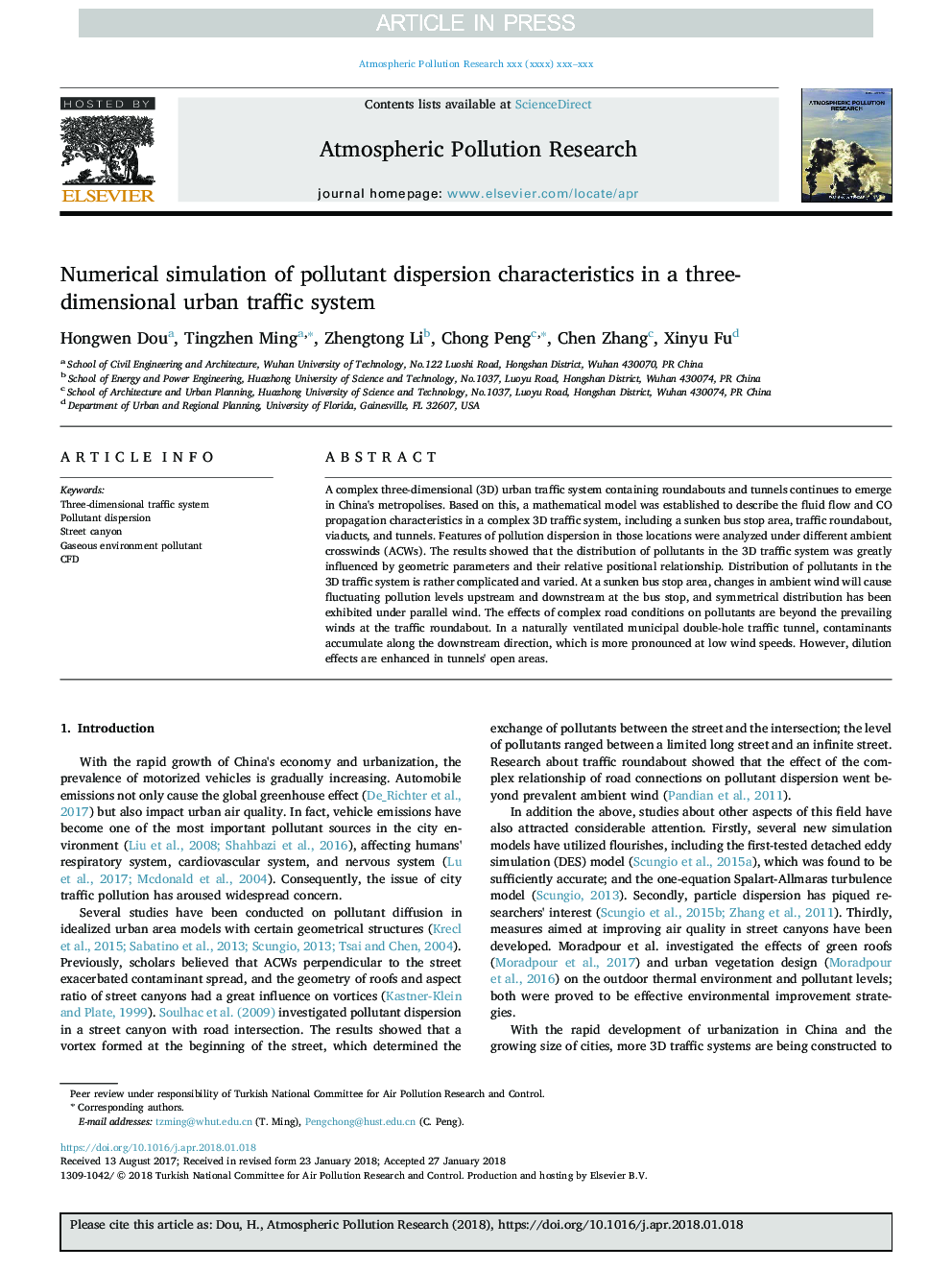| Article ID | Journal | Published Year | Pages | File Type |
|---|---|---|---|---|
| 8862619 | Atmospheric Pollution Research | 2018 | 12 Pages |
Abstract
A complex three-dimensional (3D) urban traffic system containing roundabouts and tunnels continues to emerge in China's metropolises. Based on this, a mathematical model was established to describe the fluid flow and CO propagation characteristics in a complex 3D traffic system, including a sunken bus stop area, traffic roundabout, viaducts, and tunnels. Features of pollution dispersion in those locations were analyzed under different ambient crosswinds (ACWs). The results showed that the distribution of pollutants in the 3D traffic system was greatly influenced by geometric parameters and their relative positional relationship. Distribution of pollutants in the 3D traffic system is rather complicated and varied. At a sunken bus stop area, changes in ambient wind will cause fluctuating pollution levels upstream and downstream at the bus stop, and symmetrical distribution has been exhibited under parallel wind. The effects of complex road conditions on pollutants are beyond the prevailing winds at the traffic roundabout. In a naturally ventilated municipal double-hole traffic tunnel, contaminants accumulate along the downstream direction, which is more pronounced at low wind speeds. However, dilution effects are enhanced in tunnels' open areas.
Keywords
Related Topics
Physical Sciences and Engineering
Earth and Planetary Sciences
Atmospheric Science
Authors
Hongwen Dou, Tingzhen Ming, Zhengtong Li, Chong Peng, Chen Zhang, Xinyu Fu,
